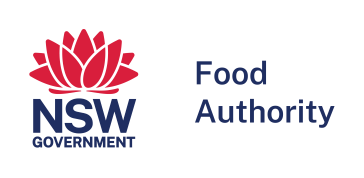- Print this page
- Download as PDF
- Share this page
Potentially hazardous foods have certain characteristics that support the growth of bacteria, or the production of toxins, so they must be kept under temperature control to remain safe to eat.
Potentially hazardous food must be kept at 5°C or colder, or 60°C or hotter, to keep it safe.
Examples of potentially hazardous food include:
- raw and cooked meat/poultry or foods containing raw or cooked meat/poultry; for example burgers, curries, kebabs, pâté and meat pies
- foods containing eggs (cooked or raw), beans, nuts or other protein-rich food, for example batter, mousse, quiche and tofu
- dairy products and foods containing dairy products, for example milk, dairy-based desserts, bakery products filled with fresh cream or with fresh custard (yoghurt is not included here as it is an acidified product)
- seafood (excluding live seafood) and foods containing seafood, for example sushi
- sprouted seeds, for example bean and alfalfa sprouts
- prepared fruits and vegetables, for example cut melons, salads and unpasteurised juices
- cooked rice and both fresh and cooked pasta
- foods that contain any of the above foods, for example sandwiches, pizzas and rice rolls.
Temperature control requirements
One of the most common causes of foodborne illness is the storage and display of potentially hazardous foods at incorrect temperatures for extended periods. This can lead to the rapid and sustained growth of food poisoning bacteria.
A food business must, when storing and displaying potentially hazardous food, do so under temperature control. Temperature control means maintaining cold food at a temperature of 5°C or below, or hot food at 60°C or above. If the food is intended to be stored frozen, ensure the food remains frozen during storage and display.
Canned and bottled foods, dried or pickled products and some other processed foods, such as dried pasta, pasteurised juices and dried powder products, are not considered to be potentially hazardous unless opened or reconstituted.
All food businesses that handle potentially hazardous foods are required to have a readily accessible, accurate, probe-type thermometer. Ensure the thermometer probe is cleaned and sanitised before it is used. It is good practice to monitor the temperature of hot or cold foods under operating conditions to ensure adequate temperature control is being maintained.
- See Food safety: temperature control of potentially hazardous foods for more information.
The 2-hour/4-hour rule
Studies show food can be safely held out of temperature control for short periods without significantly increasing the risk of food poisoning.
The time food can be safely held between 5°C and 60°C is commonly referred to as the ‘2-hour/4-hour rule’ and is applied as follows:
- less than 2 hours, the food can be used, put back in the refrigerator (below 5°C) for later use, or kept hot above 60°C
- between 2 and 4 hours, the food can be used, but can’t be put back in the refrigerator, and
- after 4 hours, the food must be thrown out.
The time between 5°C and 60°C is cumulative — that means you need to add up every time the food has been out of the fridge, including during preparation, storage, transport and display.
The NSW Food Authority and local councils recognise the 2-hour/4-hour rule as a validated alternative means for food businesses to comply with temperature control requirements in the Food Standards Code. However, it must be used correctly.
Resources
- Cooling potentially hazardous food (PDF, 221 KB)
- Potentially hazardous foods guideline (PDF, 160 KB)
- 2-hour / 4-hour rule fact sheet (PDF, 170 KB)
- Guidance on the 2-hour / 4-hour rule (PDF, 806 KB)
- Factors for bacterial growth
